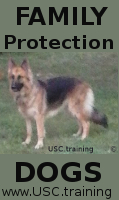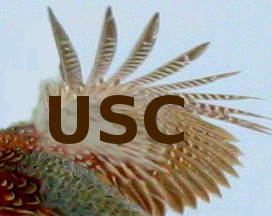Making hits on the Trap field with a shotgun is similar to close up and
fast work with a handgun, in that the effort that we make to point the
gun on target is not exactly what you would call "Aiming". But in
learning how to make these hits with any particular gun, and target
movement, the fastest way to learn is to begin taking slow and careful
Aim, then gradually picking up speed with successive shots as you can
see where the shots are
going. If you are standing beside a barn, and wish to shoot the
side of the barn, you may be able to do it with eyes closed. As target
moves farther away, you will want to use your dominant
eye to Aim your shot until you have practiced enough to make consistent
hits with this muscle movement, gun, and target distance and
size. With a handgun, it matters not whether you are left handed
or right handed, as long as you aim - line up the front site on a line
with your dominant eye and where the target will be, then bring up the
rear site in along the same line. With a
shotgun, to learn, and make hits faster, you will need to mount the
stock of the gun against your shoulder and look down the barrel with
your dominant eye. So with a long gun, forget whether you are
left handed or right handed; put the gun stock on the shoulder of the
dominant eye side. Granted, there may be someone you know who
does this differently, but anyone can practice enough to make any shot,
when it is always the same shot. Getting up to speed quickly, and
being more flexible, is why we start with aiming.
To discover which eye is your dominant eye,
simply open and look with
both eyes as you extend your arm and point your finger at a small
object that is 20 feet away or farther. Now, without moving your
finger, close one eye at a time; the dominant eye is the one that is
open when your finger is still pointed at the object when the other eye
is closed. When the only eye open is the non-dominant eye, the
finger will be pointing off to one side or the other of the target item
where you aimed your finger.
Likewise, a trainer can check to see which eye is dominant by standing
12 to 20 feet from the student, then ask the student to open both
hands, overlap thumb from one hand over the other thumb, then cross the
fingers of the top hand over those of the bottom one. This will leave a
small triangular opening. Now ask student to raise hands with arms
extended and look through the triangle with both eyes open and look
right at the Trainer's nose in the center of the triangle. You will be
able to see which eye is dominant by looking back through the triangle
to see the student's left or right eye. Now you can further
demonstrate to the student by asking them to keep your nose in site in
the center of the triangle as they move their hands together (triangle)
toward their own face, and the triangle will move back straight to the
dominant eye.
Best practice is always to shoot with both eyes open. You will be able
to find your flying target faster in the clay target games, or hunting;
you will be able to detect movement and watch your flank with the wider
peripheral vision range. Closing an eye can also affect your
depth perception. If you are having trouble at first using
only the dominant eye for aiming, you may wish to slightly squint your
non-dominant eye, but do not close it.
|

|


